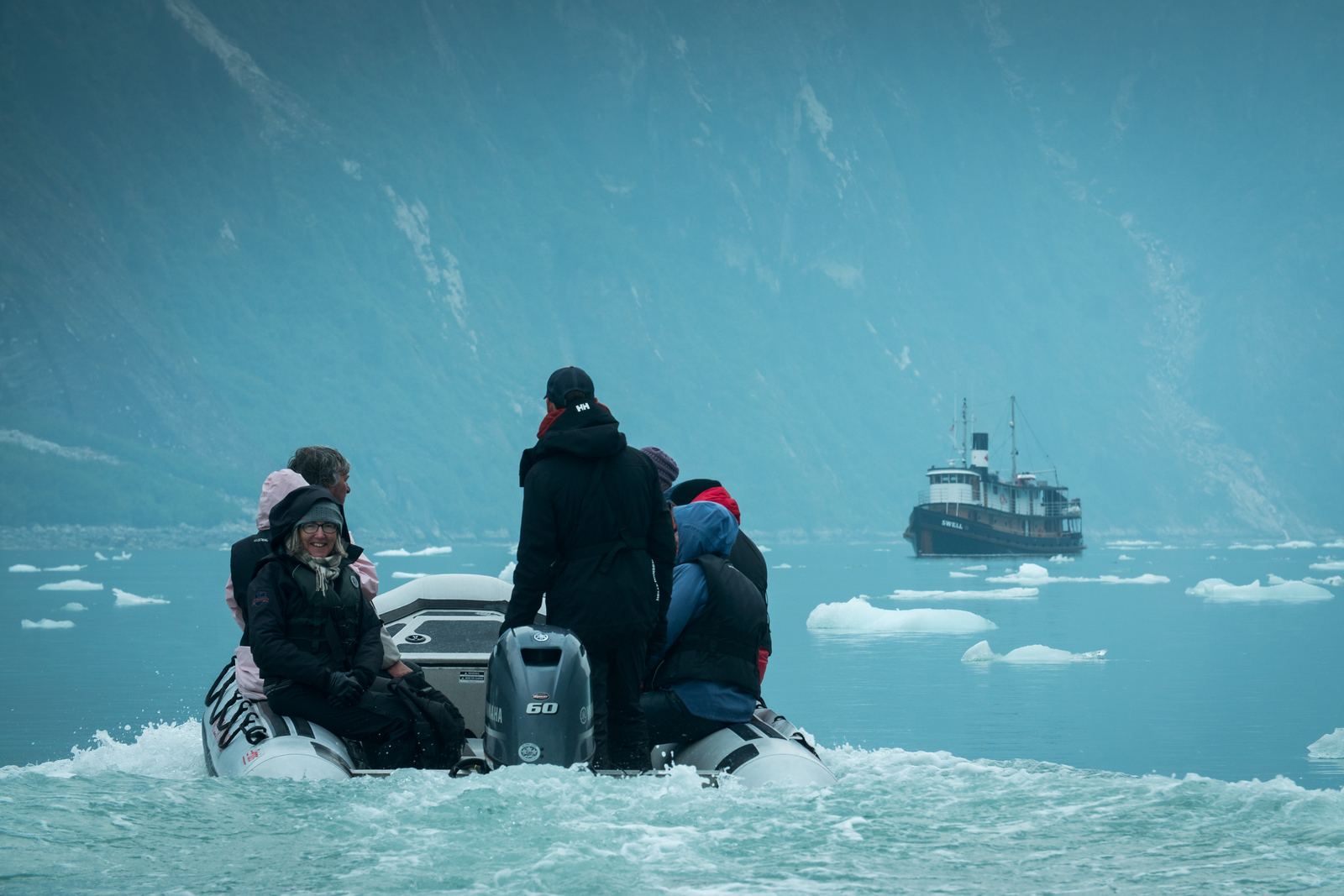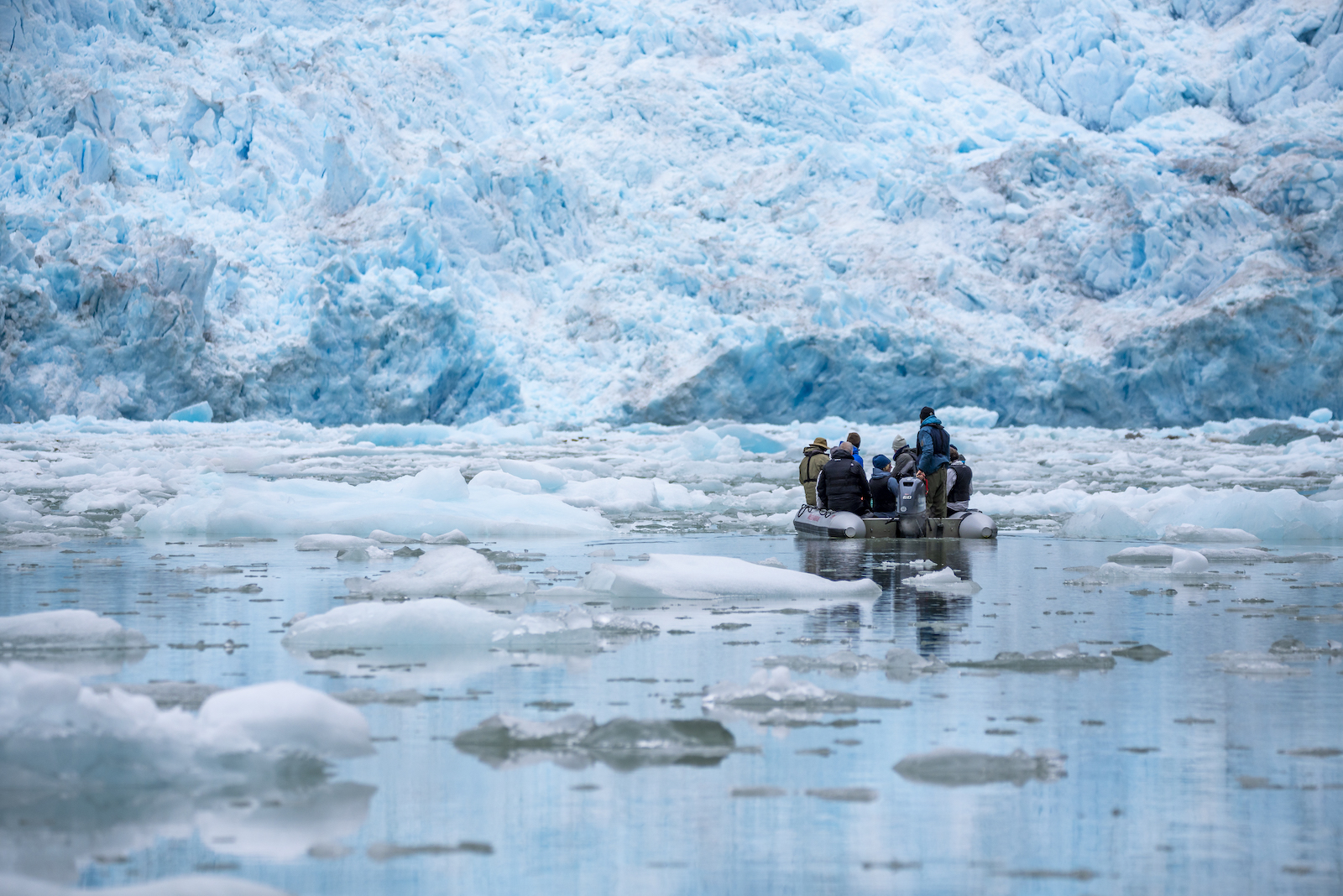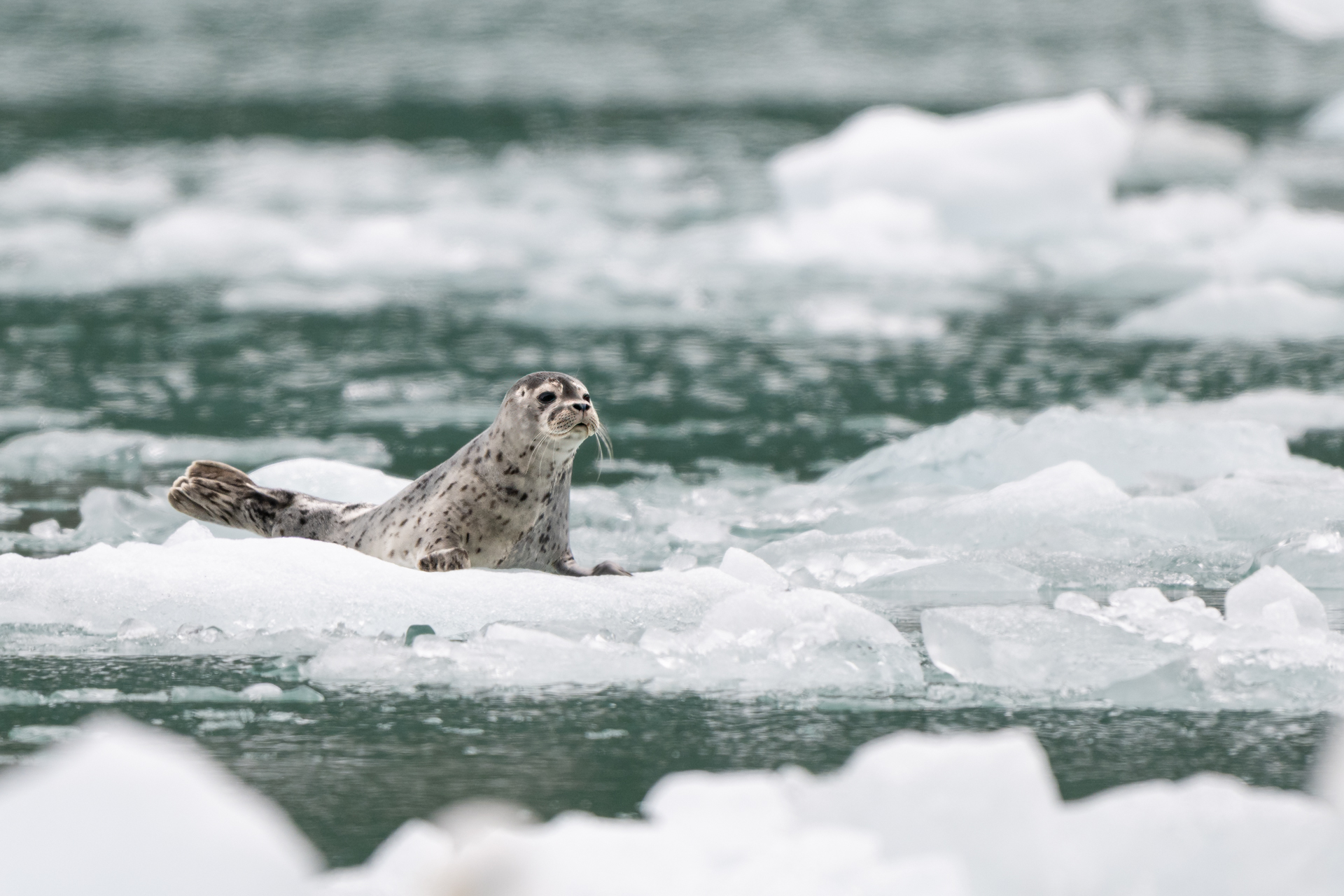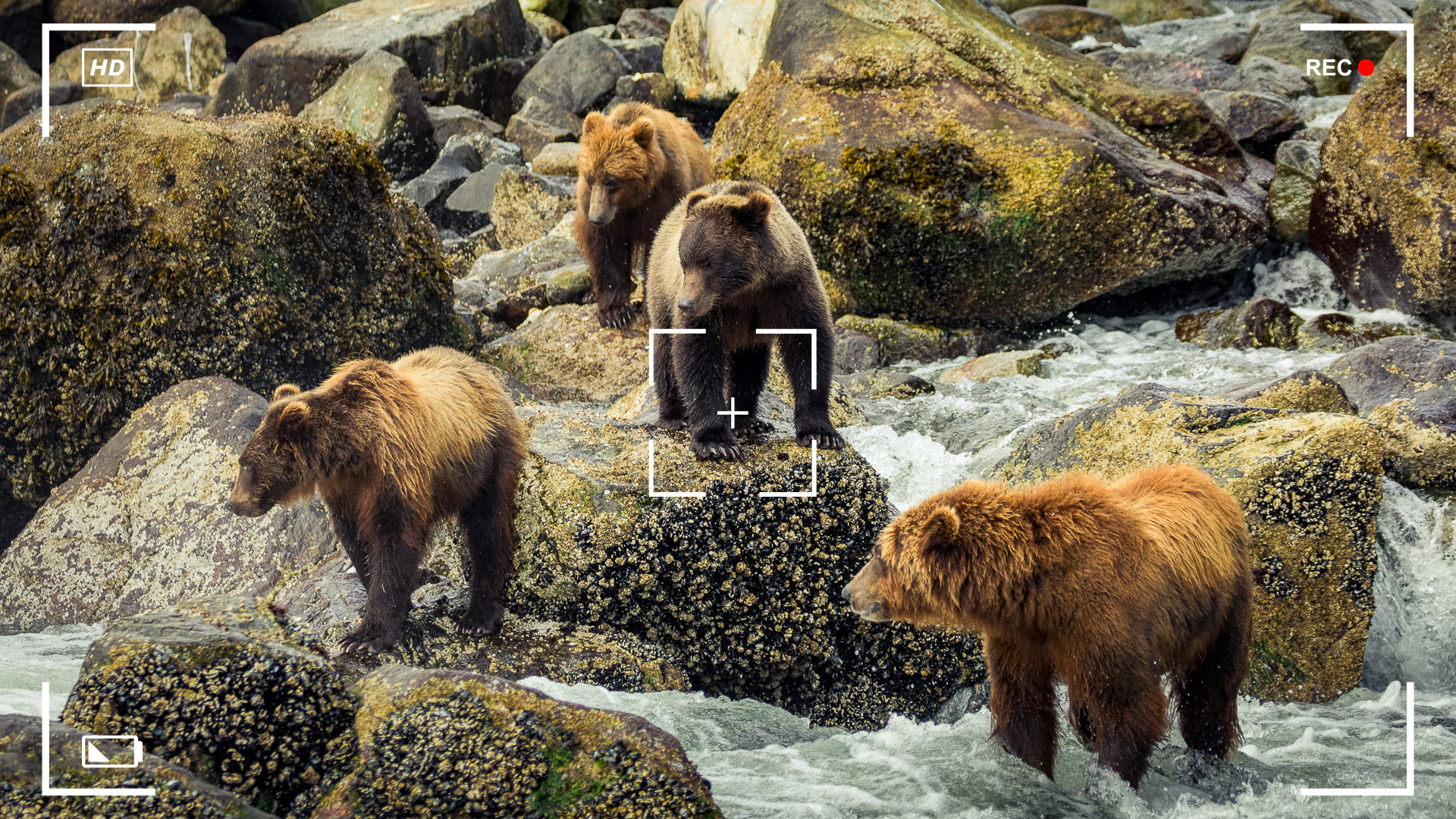When Alaska visitor Zulette Gordon nudged a floating iceberg with her fingertips, it drove home to her how different this trip was than those she’d done here before.
“We touched the icebergs. We could hear them melting beside us. We could see the bubbles rolling down inside,” she said of that moment, floating in a 20-foot zodiac with several other guests.
She delighted when her two guides chipped a piece of iceberg to use in drinks before dinner, aboard their 88-foot yacht Swell, and then took anyone who wanted for an icy swim in the fjord.
There are as many ways to explore Alaska’s Inside Passage as there are kinds of traveller. The region comprises thousands of islands along, fjords and channels, it’s best to travel by water.
Here are some travellers’ tips comparing the two notable types of cruise here: the big ship experience, and the small, nature-based experience. Which one is for you?
The Ships
That year, Zulette, a retired professor from Canada, travelled aboard the restored tugboat Swell, which has plied the coast between Seattle and Alaska for over a century. Her cozy, wood-panelled cabin had a small double bed, a full ensuite washroom, a window, a porthole and a door that opened onto the deck.
In other years, she’s taken cruises on big ships – with her husband and then, more recently, with friends in a line dancing group. There, her cabin was like a small hotel room, also with a double bed and a full ensuite. The ship felt like a large hotel, with long corridors, casinos, theatres, and pools surrounded by sunbeds, and a few thousand other guests around.
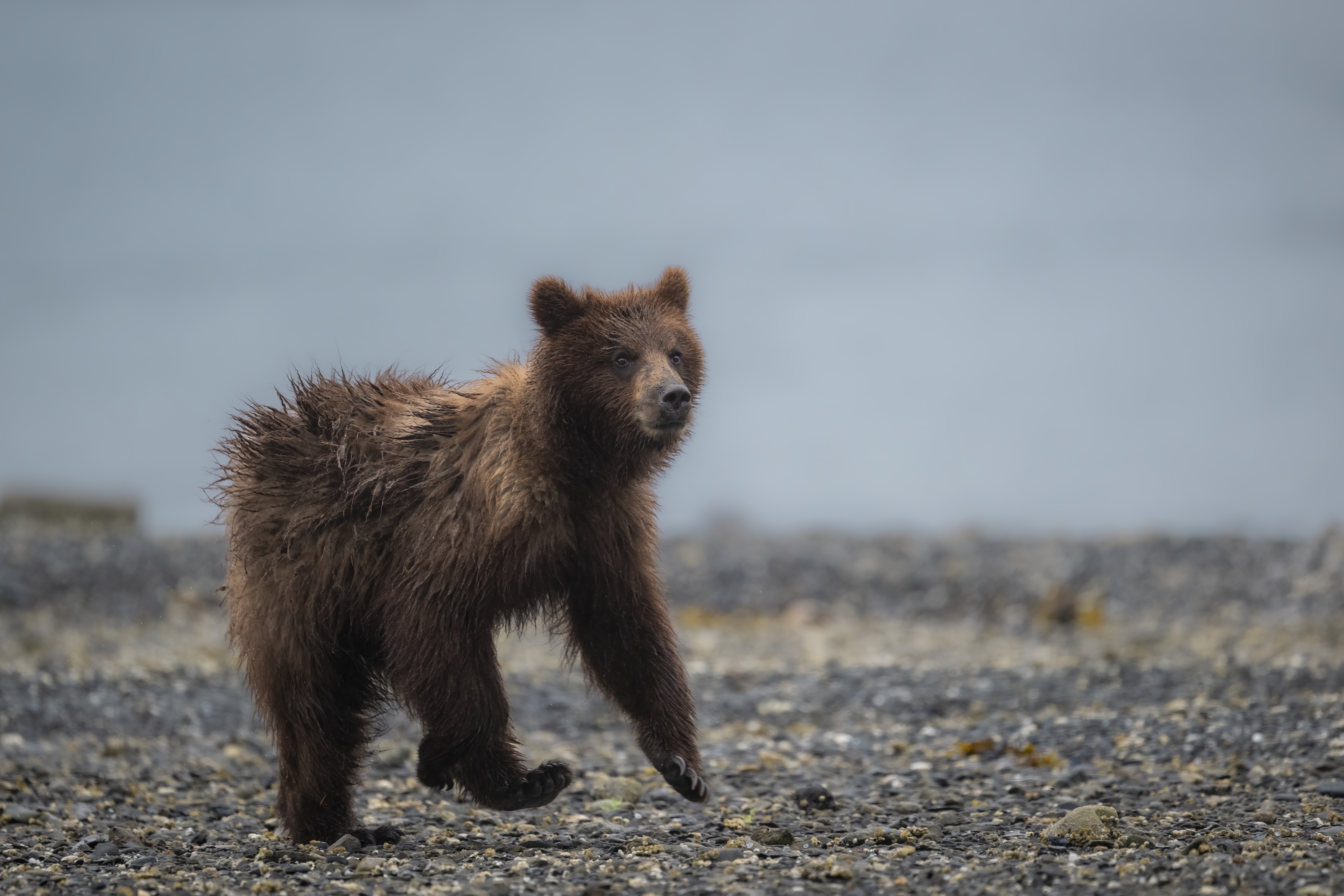
Alaska’s Southeast is home to some of the densest populations of brown bears in the world. Photo: Jenny Wong.
The Itinerary and Intent
When Zulette found herself in the ice-strewn fjord, glacier bits thundering into the sea before her, she was mid-way through an expedition cruise with Maple Leaf Adventures, a 35-year-old boutique operator with an emphasis on slow travel in nature.
The 11-day itinerary began in the west-coast fishing town of Sitka, wending its way through the Alaskan wilderness, with shore trips in quiet coves, to natural hot springs, bear sanctuaries, wild beaches and forested trails, as well as a few Alaskan towns.
“We saw interesting things up close that we never see in the cities,” said Zulette. “We saw porpoises and whales (their bubble-net feeding was incredible), sea otters, seals, and bears.”
On her big-ship cruise, a shorter itinerary, the ship made call at Alaskan towns including Skagway and Juneau. From these ports, guests could purchase a multitude of excursions, such as bus tours, zodiac-style trips, wildlife viewing trips for several hours while the ship was in port. The ship travelled at night between ports, and on a couple of “sea days” transiting without shore trips.
These trips are for those who prefer the amenities of an urban area, well-produced theatrical shows, and spending much less time in nature, or viewing it from a greater distance. People see the spectacular natural world but, by necessity because of numbers and vessel size, they’re seeing it from a greater distance away.
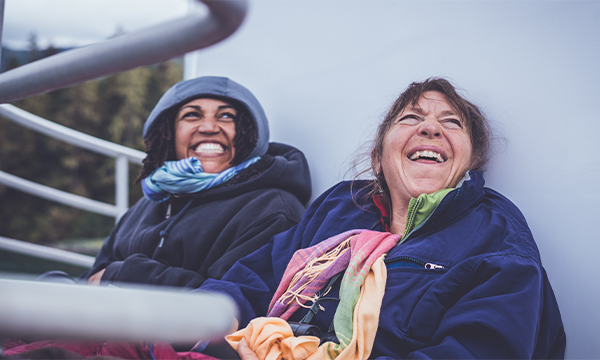
With just a handful of other guests, you’ll quickly form bonds over shared experiences. Photo: Jeff Reynolds
The Social Element
Although there are thousands of people on a big ship, people rarely engage with strangers.
“On the big ships, you need to be in a group of friends or acquaintances,” said Zulette, “because you don’t get to meet people the way you do on a small ship.”
On Swell, with maximum 12 guests and 6 guides who spend their days with the guests, the chance to chat and have fun together is ever present.
The Way It’s Priced
At first blush, the prices look different, but they’re closer than you think.
The expedition cruise on Swell is an all-inclusive price: all meals and beverages, guiding, activities and shore trips, plus an Alaskan cultural history tour at the start or end in a historic town, are all covered.
On a traditional cruise, the fare is for the passage, accommodation and some dining options. Guests then pay extra for each shore trip activity, special restaurants and onboard activities.
“You think looking at them that the expedition trip looks more expensive, but the price you see in ads for big ships is nowhere near the final price usually,” said Zulette. “In the end the expedition may still be a bit more expensive – but that’s because all of the crew are paid good North American wages and there are such a small number of guests covering expenses.”Ultimately, once timing and budget are decided, the choice of trip type comes down to what you love. Learn more about Alaska and our itineraries here.
